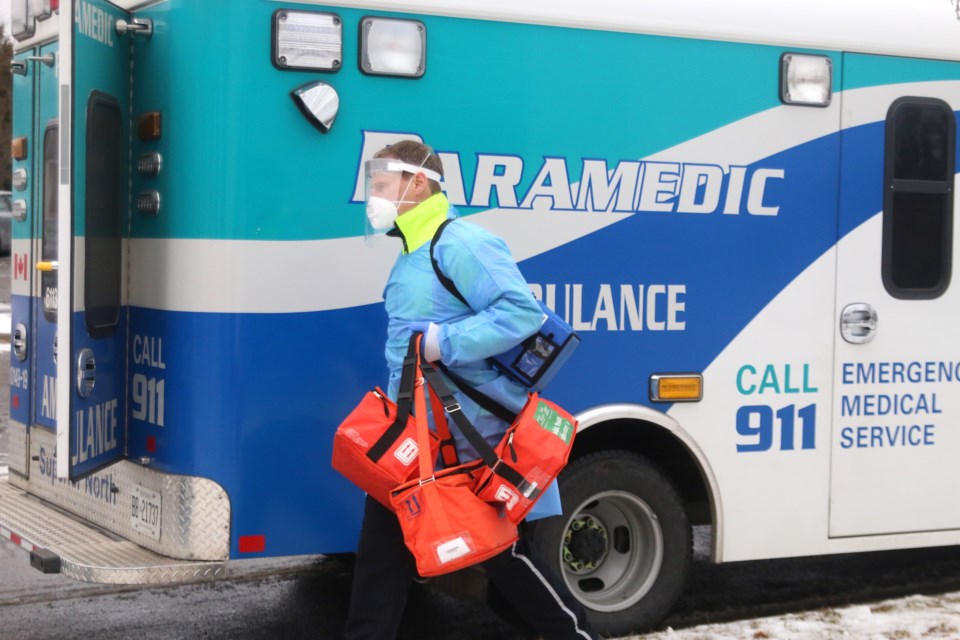THUNDER BAY – Investments in a local community paramedicine program are paying off, reducing the strain on overstretched emergency rooms, improving home health care, and saving money, Superior North EMS reports.
The agency’s community paramedicine program is designed to support seniors to remain in their homes longer, decrease emergency room visits, and help keep booming health care costs in check.
It was created in 2015 to help address an explosion in 911 calls, which increased by 80 per cent between 2005 and 2015.
The city forecasts calls will rise by another 55 per cent between 2021 and 2030, based on current trends. That’s due in large part to an aging population, as well as the public’s growing propensity to call 911.
Paramedics involved with the program offer in-home visits using smaller vehicles, assisting with medication compliance, falls risk assessments, and referrals to other health services. They can also remotely monitor patients’ vital signs.
The program is active in both the city of Thunder Bay and wider district, in Marathon, Greenstone, Schreiber, Terrace Bay, Manitouwadge, and Upsala.
If community paramedicine programs were scaled up appropriately, Superior North EMS (SNEMS) estimates it could reduce projected ambulance call volumes by 20 to 30 per cent, bringing operational savings.
Offering an update on the program to city council Monday, SNEMS acting community safety and planning commander Jim Greenaway shared statistics he said showed it’s already having an impact.
The program has reduced 911 calls by an average of 25 per cent among those served by it since 2015.
Using data from the Thunder Bay Regional Health Sciences Centre, SNEMS estimated annual savings of $50,000 to $132,000 in ER and hospital admission costs avoided through the program.
Perhaps more importantly, Greenaway noted, 100 per cent of CP patients said they felt more connected to the community, and 100 per cent said they would recommend the program to others.
Paramedics have conducted over 6,700 home visits since the program’s inception, but its capacity is set to increase exponentially.
Millions in new provincial funding was announced for the program earlier this year to support seniors to remain in their homes longer, managing growing long-term care waitlists.
That will support the hiring of 14 new staff and the purchase of non-ambulance vehicles, allowing the agency to ramp up home visits.
The program is currently open to people on LTC waitlists and those referred by the hospital's ER department or a home and community care coordinator. Superior North EMS hopes to open it to consider referrals from the public as capacity increases and COVID-19 pressures ease, Greenaway said.
Until that investment, there had been just a handful of staff on the CP team as SNEMS cobbled together smaller grants, said Shane Muir, acting superintendent of community paramedicine.
He called the program a win-win, saving money while improving quality of care.
“I think everyone is very excited for this, especially the public,” he said. “It really gives us a chance to showcase what paramedics can do.”
The community paramedicine program has also been mobilized to support COVID-19 testing and vaccination efforts, and forest fire evacuees hosted in Thunder Bay.
